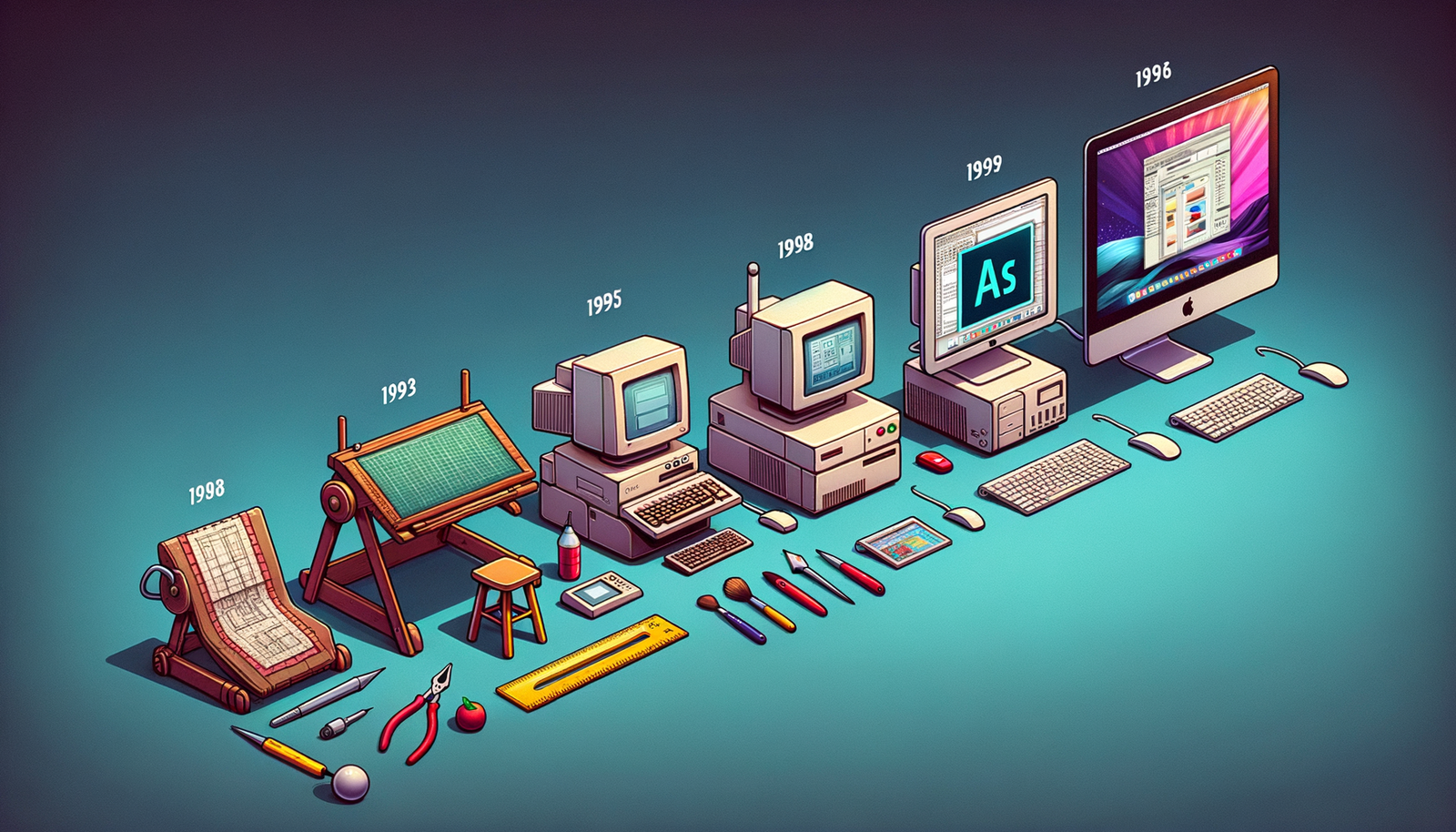Your Cart is Empty
Customer Testimonials
-
"Great customer service. The folks at Novedge were super helpful in navigating a somewhat complicated order including software upgrades and serial numbers in various stages of inactivity. They were friendly and helpful throughout the process.."
Ruben Ruckmark
"Quick & very helpful. We have been using Novedge for years and are very happy with their quick service when we need to make a purchase and excellent support resolving any issues."
Will Woodson
"Scott is the best. He reminds me about subscriptions dates, guides me in the correct direction for updates. He always responds promptly to me. He is literally the reason I continue to work with Novedge and will do so in the future."
Edward Mchugh
"Calvin Lok is “the man”. After my purchase of Sketchup 2021, he called me and provided step-by-step instructions to ease me through difficulties I was having with the setup of my new software."
Mike Borzage
Design Software History: The Evolution of Design Software: From Early Tools to Adobe's Innovations
July 29, 2024 4 min read


Early Digital Design Tools and the Founding of Adobe
Introduction to Digital Design Tools Pre-Adobe
Before the emergence of Adobe, the landscape of digital design tools was quite primitive. Early computer graphics were often limited by the lack of sophisticated software and hardware. The first serious attempts at digital design were made in the 1960s and 1970s, with systems like Ivan Sutherland's Sketchpad, which was one of the earliest programs that allowed users to draw on a screen with a light pen.
Despite these innovations, the tools were cumbersome and generally inaccessible to the wider public due to their high cost and technical complexity. The introduction of the Apple Macintosh in 1984 was a major turning point. With its graphical user interface and affordable price point, the Macintosh made digital design more accessible to a broader audience.
Founding of Adobe Systems
Adobe Systems was founded in December 1982 by John Warnock and Charles Geschke, two former Xerox PARC employees. The company's initial focus was on developing a technology that would revolutionize the way documents and graphics were handled. This technology was called PostScript, a page description language that enabled high-quality text and graphics printing.
PostScript quickly became a pivotal technology in desktop publishing. Its ability to describe the appearance of text and graphical elements on a page, coupled with its compatibility with a variety of printers, made it a crucial component of the first Apple LaserWriter. The success of PostScript laid the foundation for Adobe's future innovations in digital design software.
The Birth and Evolution of Adobe Photoshop
Inception of Photoshop
The story of Adobe Photoshop began with Thomas Knoll, a PhD student at the University of Michigan, who developed a program called Display to display grayscale images on a monochrome display. His brother, John Knoll, who was working at Industrial Light & Magic, saw the potential of the program and suggested turning it into a fully-fledged image editing software.
In 1988, the Knoll brothers pitched their software to Adobe, which decided to acquire the distribution license. Adobe Photoshop 1.0 was released in 1990 and quickly gained popularity among graphic designers, photographers, and digital artists. It introduced several groundbreaking features that set the standard for image editing software.
Key Technological Innovations
Adobe Photoshop introduced numerous technological innovations that transformed the field of digital design:
- Layers: One of the most revolutionary features, layers allowed designers to separate different elements of an image for easier manipulation and editing.
- Filters: These enabled users to apply various effects to images, drastically reducing the time required for complex image processing tasks.
- Color Correction Tools: Advanced tools for adjusting color balance, contrast, and brightness, which were critical for professional photography and graphic design.
These innovations had a significant impact on digital photography, graphic design, and media production, solidifying Photoshop's position as a market leader.
Adobe Illustrator and Vector-Based Design
Development of Adobe Illustrator
Adobe Illustrator was first released in 1987 as a tool for creating vector graphics. Unlike raster graphics, which are composed of pixels, vector graphics use mathematical equations to represent images. This allows for infinitely scalable designs without loss of quality. The development of Illustrator was heavily influenced by Adobe's PostScript technology, which provided the underlying framework for rendering vector graphics.
Technological Advancements and Industry Impact
Adobe Illustrator introduced several key technological advancements that made it an essential tool for professional designers:
- Bezier Curves: These allowed for precise control over the shape and smoothness of curves, making it easier to create complex and detailed vector artwork.
- Advanced Vector Tools: Tools for creating shapes, paths, and text that could be easily manipulated and combined to produce intricate designs.
The impact of Adobe Illustrator on professional graphic design, typography, and illustration was profound. It became the go-to software for creating logos, icons, and other scalable graphics, and its influence can still be seen in modern design practices.
The Integration of Adobe Tools in Modern Design Workflows
Creative Cloud and Software Integration
In 2013, Adobe transitioned from selling standalone products to offering a subscription-based model known as Adobe Creative Cloud. This shift allowed users to access the entire suite of Adobe software, including Photoshop, Illustrator, InDesign, and more, through a single subscription. The integration of these tools into a unified platform enabled more streamlined and efficient design workflows.
Creative Cloud also introduced new features for collaboration and cloud storage, allowing designers to work together in real-time and access their projects from any device.
Adobe's Role in Contemporary Design
Adobe continues to play a crucial role in various fields of digital design, including digital publishing, web design, UX/UI design, and even virtual reality. The company's ongoing innovations, such as AI-driven design tools like Adobe Sensei and enhanced cloud-based collaboration features, demonstrate Adobe's commitment to staying at the forefront of the industry.
As technology continues to evolve, Adobe's tools will likely remain integral to the creative processes of designers, artists, and developers worldwide.
Also in Design News

Design Software History: From Plotters to Procedural Intent: A Technical History of Generative and Parametric Design Software
January 04, 2026 13 min read
Read More
Semantic Meshes: Enabling Analytics-Ready Geometry for Digital Twins
January 04, 2026 12 min read
Read MoreSubscribe
Sign up to get the latest on sales, new releases and more …



